Tom's Guide Verdict
The Keychron K8 Max is an excellent, comfortable and durable keyboard, offering fast, precise typing with a 1,000Hz polling rate and OSA OEM keycaps, complemented by acoustic foam for a balanced sound. However, its high price is a concern, as you can buy cheaper, customizable alternatives from Keychron.
Pros
- +
Built-in ergonomic support
- +
1,000Hz polling
- +
Fast typing
- +
Dampened sound
- +
Durable build
Cons
- -
You can get more from cheaper models in the Keychron range
- -
Bland-looking
Why you can trust Tom's Guide
The Keychron K8 Max is a wireless 80% TKL custom mechanical keyboard perfect for daily use, with ergonomic support and a dampened sound. It’s a great board for typing all day long.
Is it one of the best mechanical keyboards? Well, the 1,000Hz polling means fewer missed key inputs, and the position and style of the keycaps make for fast, comfortable typing. The durable build, layers of acoustic foam and damped, clacky sound also make it pretty satisfying to type on.
But it’s starting to enter pricey territory for a Keychron board. There are other models you could pick up for a little less cash, which could be better for your needs. So is it for you? You can find out more in this full Keychron K8 Max review.
Keychron K8 Max review: Cheat sheet
- What is it? A wireless 80% TKL custom mechanical keyboard.
- Who is it for? Anyone who needs a comfortable, customizable board for typing all day and gaming in the evening.
- What does it cost? The Keychron K8 Max is available at Amazon U.S. for $124 and at Amazon U.K. for £109.
- What’s good? Fast typing, strong ergos, decent sound and 1,000 Hz polling.
- What’s not? It’s a pretty bland-looking board, and you can get more from cheaper models in Keychron’s range.
Keychron K8 Max review: Specs
Price | |
Switches | Keychron Super Switch |
Layout | 80% TKL |
Number of keys | 87 |
Mount type | Tray mount |
Keycap material | Double-shot PBT |
Keycap profile | OSA (OEm profile with spherical-angle) |
Backlight | South-facing RGB LED |
Case material | ABS |
Supported operating systems | Windows, macOS, Linux |
Connectivity | 2.4GHz, Bluetooth, wired connection |
Polling rate | 1,000Hz |
Measurements | 13.94 x 4.89 x 1.39 inches |
Weight | 2.88 pounds |
Keychron K8 Max review: The ups
The Keychron K8 Max is lovely to type on, with a comfortable and supportive typing experience. It’s also customizable with hot-swappable switches to suit your needs. The board sounds great with layers of acoustic foam to dampen sound, and 1,000Hz wired polling and N-key rollover mean fewer missed key inputs while gaming.
Typing experience
Typing on this keyboard is a real breeze. The combination of the OSA keycap profile and foam cushioning makes it an incredibly satisfying experience. Although the board is tray-mounted and so doesn’t have any flex while typing, the layers of foam damping help it feel almost spongy beneath my fingertips.
The board has an 80% TKL layout, which is my preference for day-to-day work. Not having the number pad on the right of the keyboard means my mouse can be closer, reducing muscle strain. But if you use numbers and spreadsheets a lot for work, you may prefer to use a 100% layout board instead.
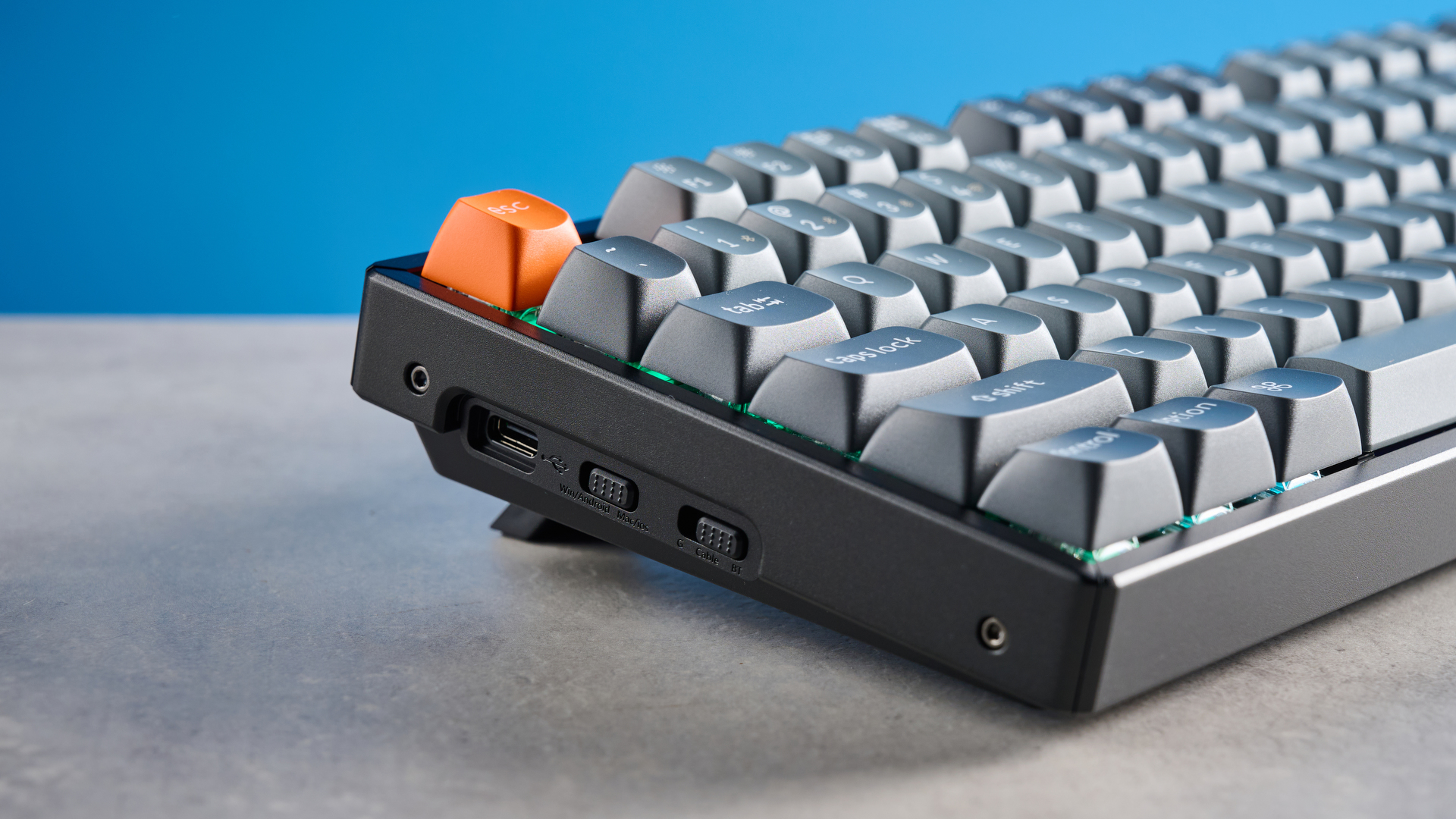
The K8 Max uses OSA profile keycaps, which have a medium-tall profile and bevelled tops to cradle your fingertips. The edges of the keys are also rounded, which are far more comfortable than the sharper edges of Cherry or OEM keycaps, in my opinion.
Get instant access to breaking news, the hottest reviews, great deals and helpful tips.
The rake of the board sees the OSA keycaps slope inwards towards the center of the board. My hand was literally being cradled by the keys as I was typing, creating a more natural hand position that reduces finger fatigue. They’re made from double-shot PBT for oil and wear resistance, with a textured surface for grip. Oddly, despite being of the same finish, I found the keys on this board a little more slippery than the keys on the Keychron C1 Pro 8K — my daily driver.
Keybaord | Type | WPM | Accuracy |
MacBook Air M2 built-in | Scissor | 61 | 96.19% |
Keychron C1 Pro 8K | Mechanical | 64 | 95.21% |
Mechanical | 60 | 94.92% | |
Keychron K8 Max | Mechanical | 59 | 96.36 |
My words per minute result was a little lower than the C1 Pro 8K, as you can see from the table above, potentially due to the slippier keycaps.
There isn’t as much bounce on this board either, unlike the Keychron Q3 HE or the super bouncy Keychron Q1 Pro. The Q3 HE is gasket-mounted, which provides more flex to the board as you type, and you can feel the board move under your hands. I like this effect when I type, as it makes my fingers feel a lot less fatigued, but it’s down to personal preference. On the other hand, the K8 Max’s tray-mounted design offers a stiffer type-feel and less PCB movement for more responsive gaming performance, not to mention a louder sound.
Switches
The K8 Max I tested uses brown Gateron super switches, which are tactile, so you get a nice click sensation when typing. This is very satisfying and makes me feel a little like Roz, the receptionist from Monster’s Inc., but in the best way possible.
The brown switches require 55g of force to actuate. This began to fatigue my fingers a little, as I was having to press down harder on the keys to get them to actuate. However, this can be remedied since the board is hot swappable.
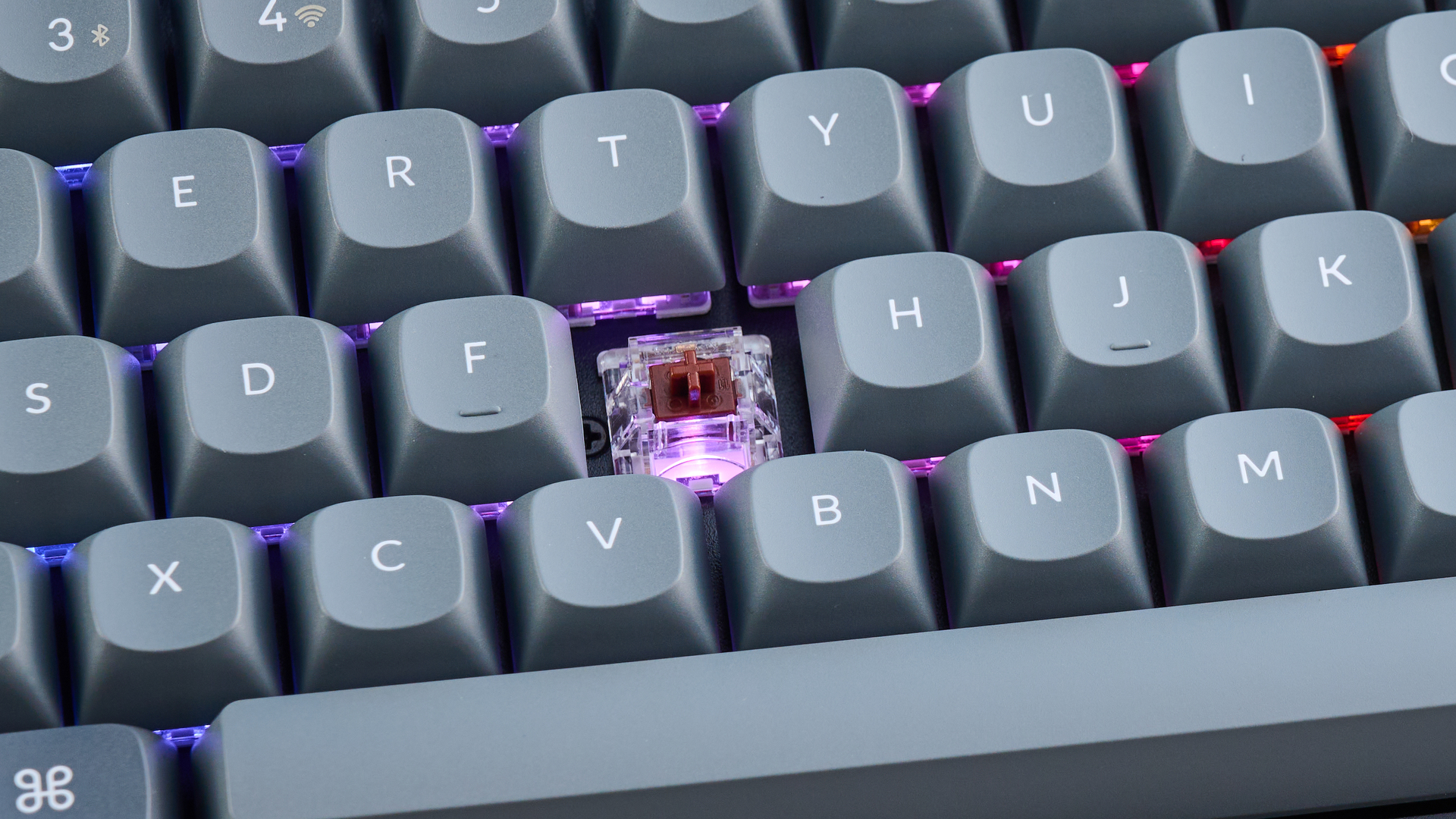
You can also order the board with banana switches, which are still tactile but have a higher bump when actuating the key for a press that feels smoother. There are also red switches if you want a linear key for a quieter typing experience without the audible and tangible bump. This is likely the best option for you if you’re planning on using the board in an office setting.
I usually use banana switches, as despite requiring the greatest actuation force of 57g, they have the shortest actuation distance of 3.6mm, so my fingers don’t need to travel as far — reducing fatigue. The brown switches, on the other hand, have an actuation distance of 4mm, which is the same as the red switches.
Customizable
This is a hot-swappable board, so you’re able to get the best setup for you. Whether you want a board that’s perfect for typing or is a gamer’s dream, there’s scope to achieve exactly what you need.
As I mentioned above, the board is available with either red, brown or banana Gateron switches, so you can choose whichever ones best suit your needs. Even so, if you change your mind, the board is compatible with any 3-pin and 5-pin standard-profile switches.
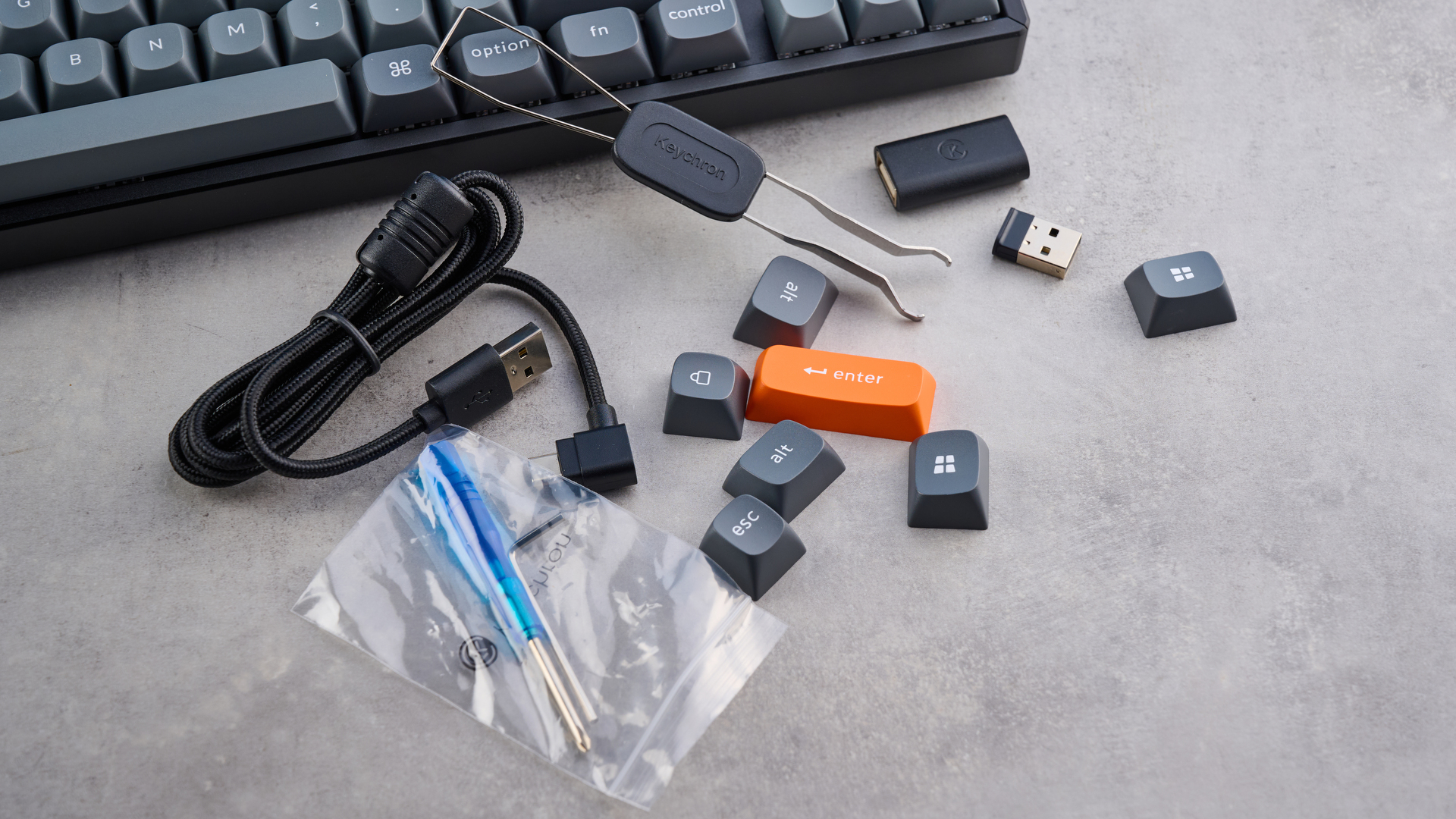
The K8 Max is also configurable through the Keychron launcher web app. This is browser software, so it's super easy to access from any computer without needing to install software. In Launcher, you can update firmware, remap keys and set up macros or binds. This is perfect for
Sound
While it doesn’t have the retro sound of the Keychron C1 Pro 8K that I love, the Keychron K8 Max still sounds great with a dampened metallic clacky sound. The several layers of acoustic foam and silicone damping inside the board provide a cushioned, dampened sound, making sure you get the initial clack of keys hitting the metal plate, without that sound ringing out too much afterwards.
Built-in ergonomic support
Keychron knows how to make a board that’s going to support you through an entire day of work in the office, then a full evening of gaming. This K8 Max has adjustable feet on its underside to improve the typing angle.
Speaking of typing angles, the K8 Max has plenty. The board sits at 3.4 degrees, the small feet are at 7.7 degrees, and the highest setting is 10.7 degrees.
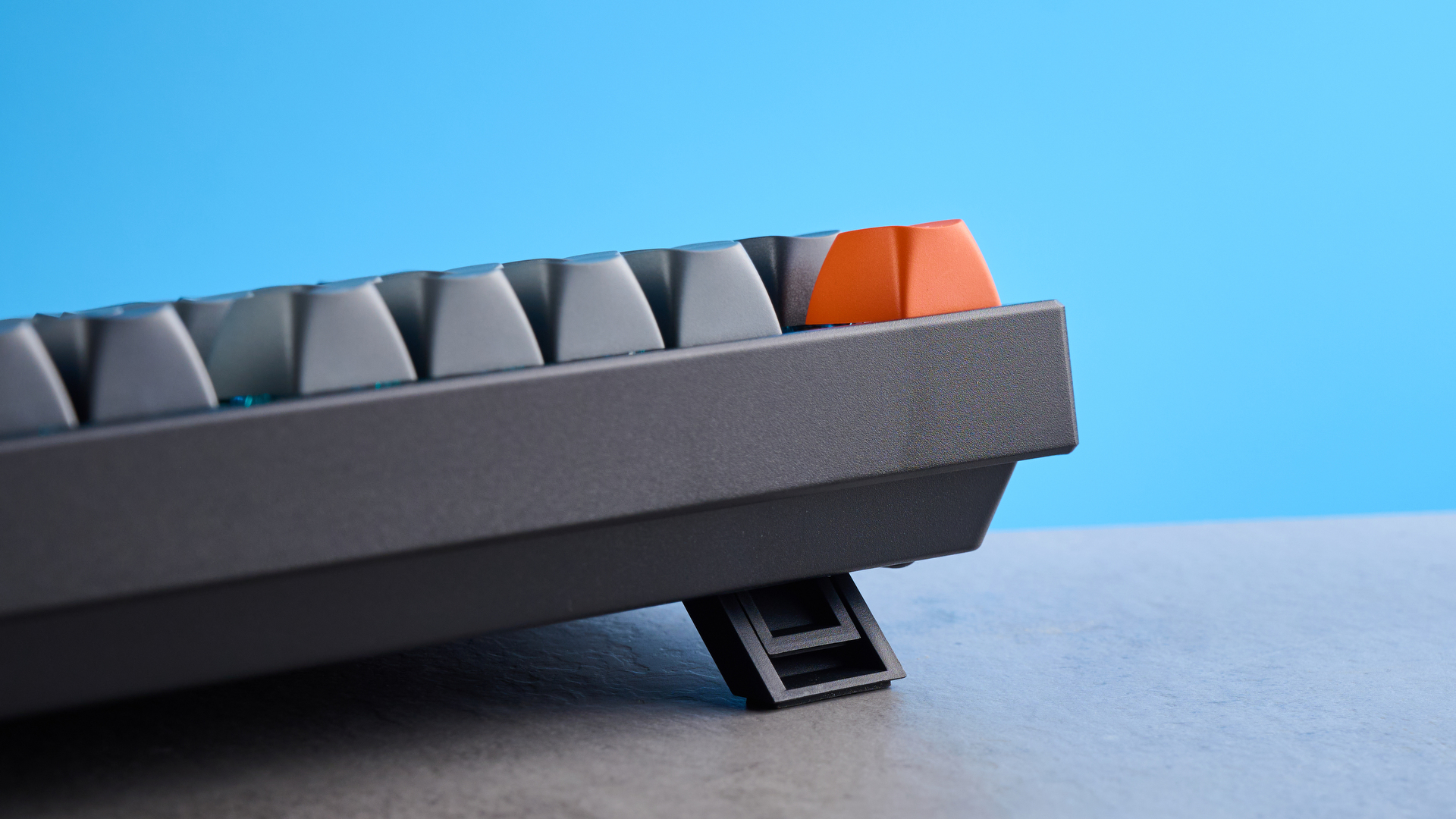
I like using the highest setting as it is the same as the tallest adjustment on my Keychron C1 Pro 8K, which I use daily. The adjustment makes a huge difference, as this isn’t a feature on the Q3 HE, and I often pay the price with a slight ache in my wrists after using it all day long.
Design and build quality
The Keychron K8 Max feels very sturdy. Although the aesthetic didn’t exactly excite me (more on that later), a lot can be said for the build quality of the board. The frame is made from ABS plastic and aluminium, while the plate is steel, making for a super robust finish. The tray mount also adds to the stability of the board, while the PBT keycaps will stand up to long-term use.
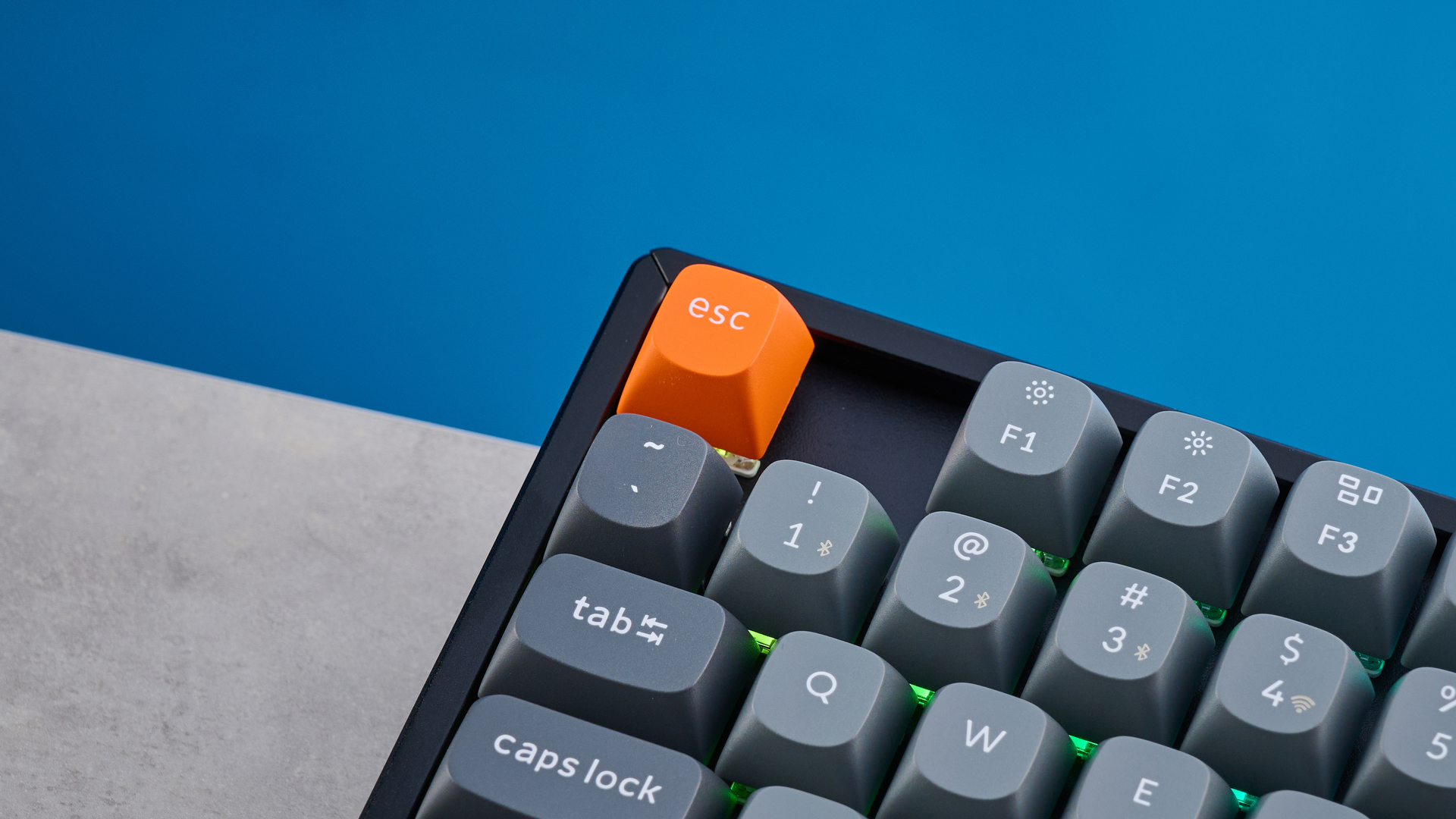
The 80% TKL board measures 13.94 x 4.89 x 1.39 inches and weighs 2.88 pounds. This is the perfect size to sit in front of your computer and provide plenty of functionality, while still giving you space for your notepad and mouse on the side. Even for an 80% TKL, it’s on the heavier side, especially when compared to fully plastic boards like the NuPhy Gem80, which is 2.4 pounds, or the Epomaker TH80 Pro, which is 2.2 pounds.
That said, 80% standard-profile boards aren’t designed to be carried around with you. If portability is a major concern, consider the Lenovo Multi-Device Keyboard or the Keychron B2 Pro.
Compatibility
The keyboard can be used with Windows, macOS or Linux. There’s a switch on the left-hand side of the board, so you can easily change between Windows/Linux and macOS. There are keycaps included for both Windows and macOS, so you can set up the keyboard for whichever system you use most often. But to avoid having to swap out keycaps each time you use a different operating system, you could look at the Lofree DOT, which comes with both sets printed on the keys.
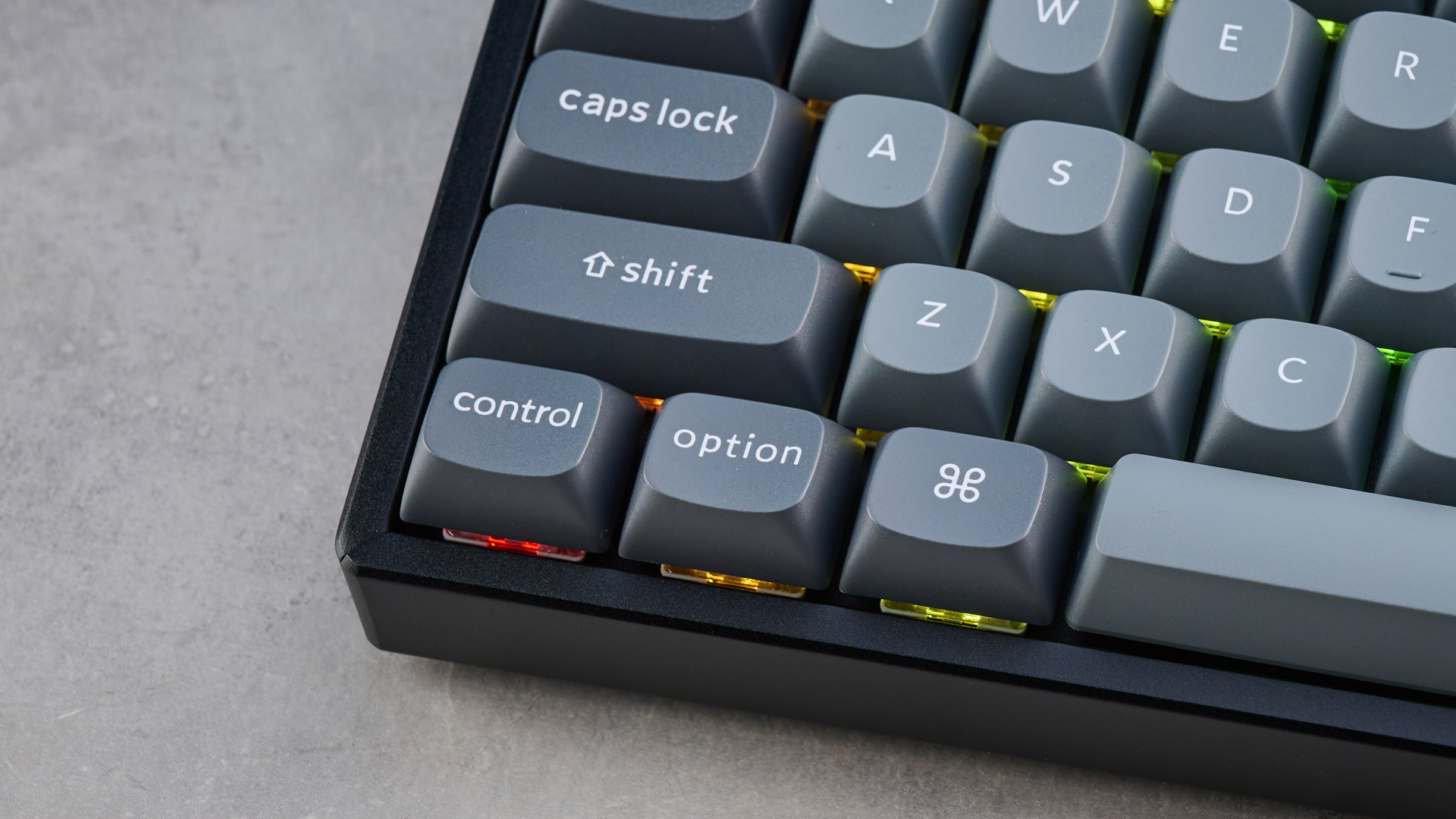
I was able to connect with up to three devices simultaneously with multipoint connection, which was easy to set up. I could easily swap from using the keyboard with my iPad to my computer.
Fast enough
The Keychron K8 Max has a maximum polling rate of 1,000Hz, achievable via a wired or 2.4GHz connection. This rate creates a lower latency, making it better for gaming, where you want to minimize missed inputs. However, this rate significantly reduces when using the keyboard over the Bluetooth connection, as it becomes just 90Hz — this is normal, but just something to be aware of.

When used with a Bluetooth connection, you can get up to 30 hours with the RGB lighting on, so it’s wise to keep the board using Bluetooth while you work and use 2.4 GHz for wireless gaming.
Keychron K8 Max review: The downs
Unfortunately, I think this keyboard is a little too expensive for what it is, with better keyboards available for less.
A little pricey
The Keychron K8 Max is available at Amazon U.S. for $124 and at Amazon U.K. for £109. And while this isn’t breaking the bank in the world of keyboards, where the Lemokey L1 and the Keychron Q3 Max cost $214, there are cheaper boards that can offer similar results.
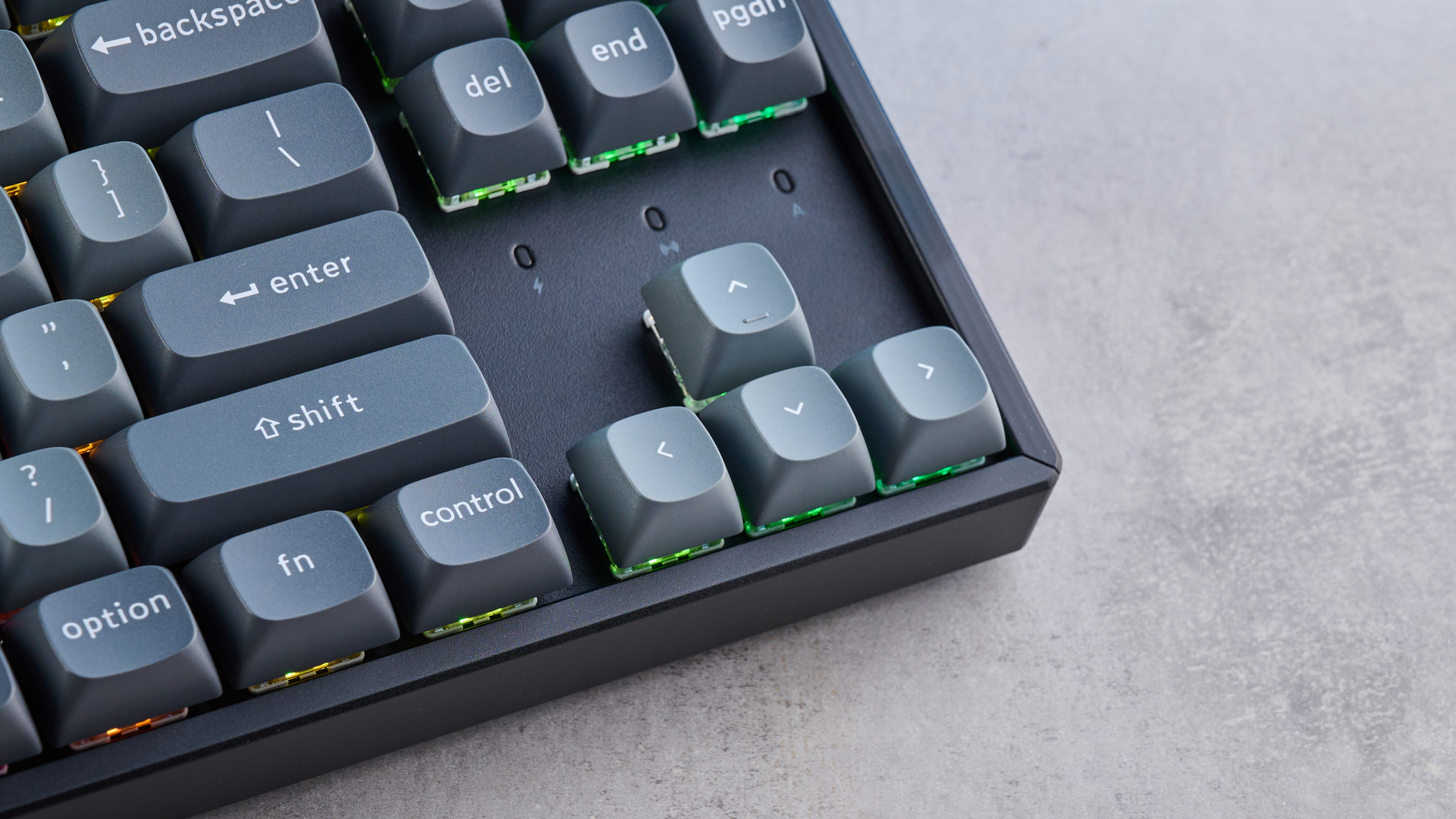
The board I use daily is the C1 Pro 8K, which is my ideal keyboard for daily typing, and it only costs $54. It’s also incredibly customizable and offers up to 8K polling, so it rivals some of the best gaming keyboards, too. But it only has wired connectivity, so the K8 may win you over there. However, the Keychron K8 V2 only costs $79 and offers all of the same specs, just with Cherry profile keycaps. So, while there is a lot of good about the K8 Max, you can find better elsewhere.
Bland looks
The thing I dislike most about this keyboard is its looks. Granted, it has the classic Keychron black/gray/orange colorway and bright RGB south-facing lighting, but the bland gray and McLaren orange accent keys aren’t for me.
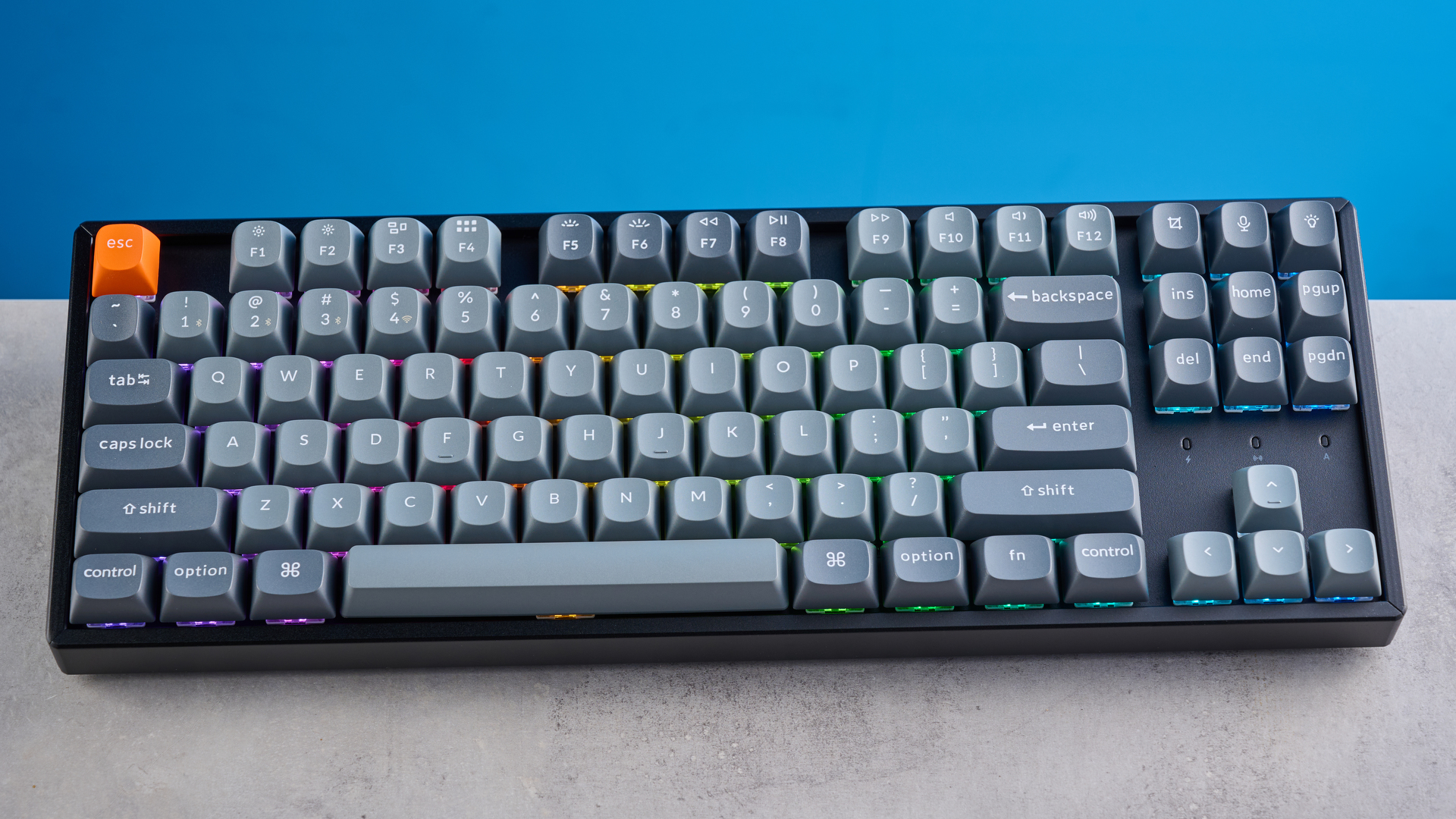
Keyboards don’t have to be boring. For example, the Epomaker DynaTab75 is genuinely beautiful with sky blue keys and a matte finish. And if a cute vibe isn’t for you, head towards a cyberpunk look with the MelGeek CYBER01 with luminous details on a black board. But my point is, there could be more going on than just gray.
Keychron K8 Max review: Verdict
The Keychron K8 Max is an awesome keyboard with a lot to love. The adjustable feet mean it’s comfortable to type on all day long, and the durable build ensures it’ll stay in place on your desk for a long time to come.
The keyboard has 1,000Hz polling when used with a wired connection or the 2.4GHz wireless dongle, which is great for gaming. And it offers a fast typing experience too, which is aided by the Gateron Super switches and OSA keycap profile. The layers of acoustic foam cushioning also mean that the board sounds lovely. It’s a great midpoint between a retro clacky board and a quiet office typer.
Admittedly, I think the design is a little bland, which might be fine for an office environment, but it isn’t for me. The board is a little on the expensive side for what it is, as Keychron produces boards with similar or better qualities for less money.
But that doesn’t mean I don’t like it. I actually love it since it offers everything you could possibly need from a board for the office.

Ashley is a staff writer on the the Reviews team at Tom’s Guide. She has a master’s degree in Magazine Journalism from Cardiff University and a BA in Journalism, Media and Sociology. She has written for titles including Women’s Health UK, writing health and wellness stories, and Virgin Radio UK, specializing in entertainment news and celebrity interviews. She has reported on a variety of topics including music, literature, motorsport, entertainment and health. She has previously reviewed live music events, books, and wellness products but discovering the top audio equipment on the market is what she does best. When she is not testing out the latest tech, you can find her either curled up with a cup of tea and a good fantasy novel or out hiking.
You must confirm your public display name before commenting
Please logout and then login again, you will then be prompted to enter your display name.

